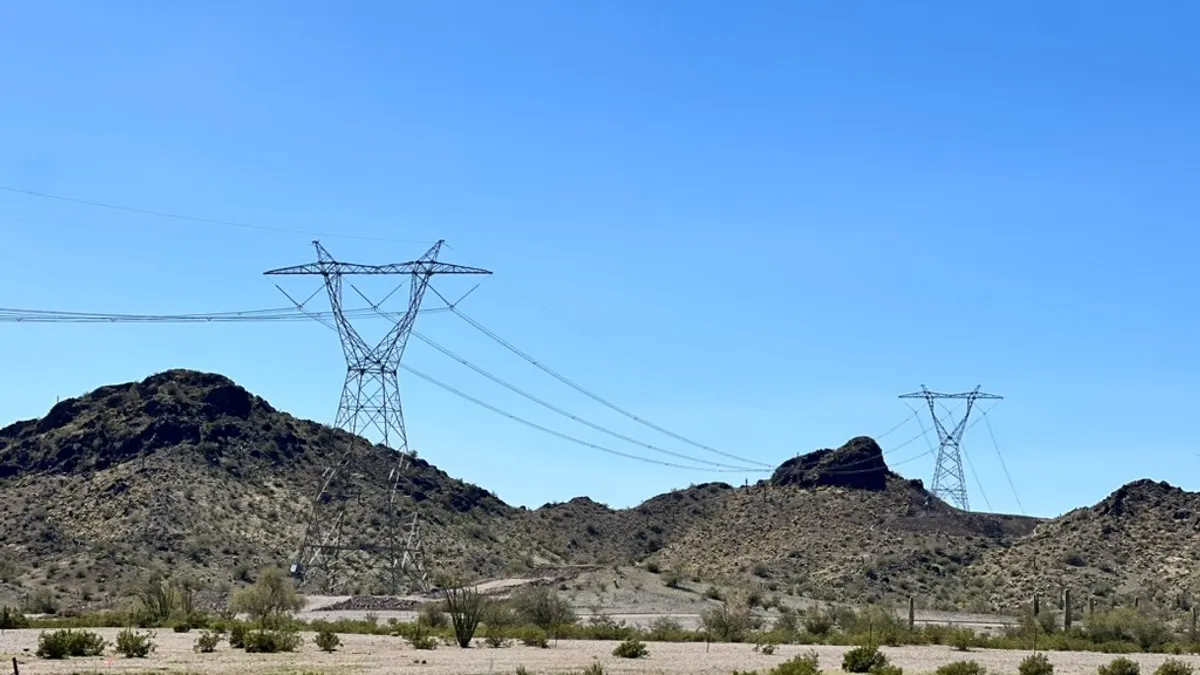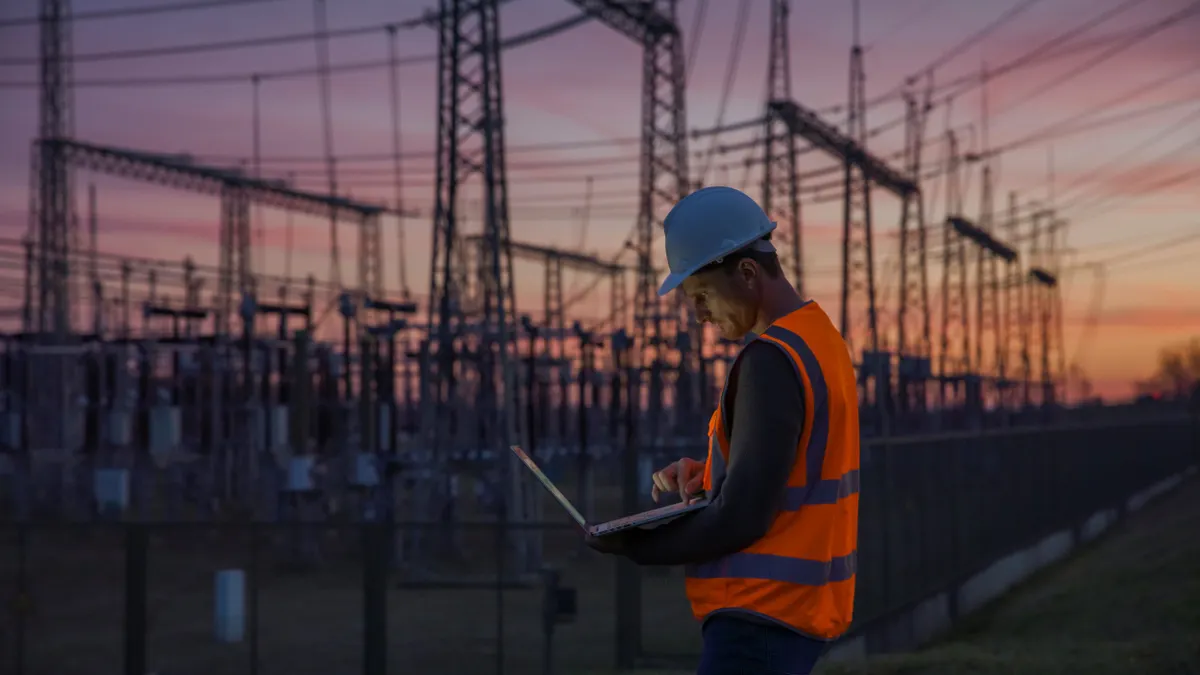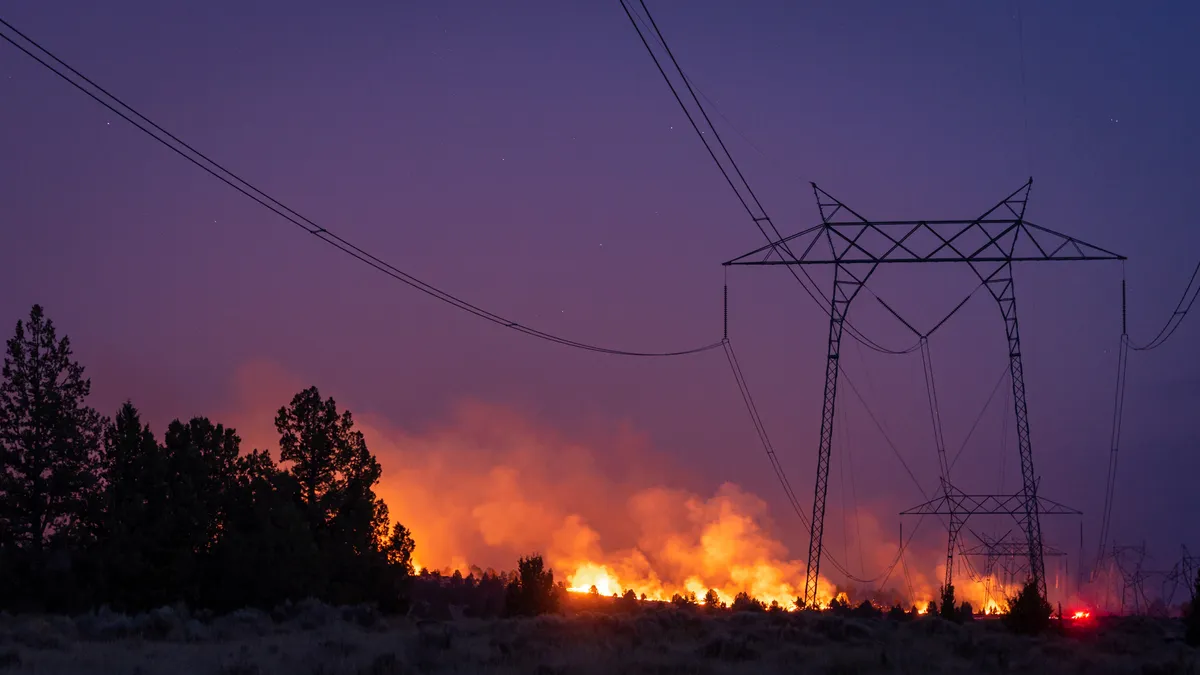Puerto Rico's embattled electric utility is moving toward a cleaner, more resilient and financially-stable future, according to Puerto Rico Electric Power Authority (PREPA) CEO Jose Ortiz.
Ortiz, speaking Tuesday at a virtual conference hosted by New Energy Events, outlined progress being made on a range of initiatives — from the selection of LUMA Energy in June to manage the utility's transmission and distribution system, to procurement efforts for about 1,800 MW of renewable generation.
But some stakeholders say that rosy outlook may be premature. They note that the island's utility has a history of missing deadlines, say the procurements have so far been insufficient to modernize the grid, and warn savings from the LUMA partnership may be oversold.
"You're hearing a lot of optimism that has been Jose Ortiz and PREPA's style," Roy Torbert, principal of Rocky Mountain Institute's Islands Energy Program, told Utility Dive. But "PREPA has a pretty well-documented track record of over-estimating savings."
The utility is in the midst of a long-term rebuilding phase.
Hurricane Maria destroyed the island's electric grid in 2017, leaving 1.5 million residents without power for months. Since then, the island has been hit by a series of earthquakes that damaged generation and have made the fragile power system even more unstable.
To address these threats to reliability, last year, PREPA issued a 20-year Integrated Resource Plan (IRP) to modernize the island's grid. A decision from Puerto Rico regulators — whether to accept, reject or recommend modifications to the plan — is expected in the coming weeks, according to observers.
New operating arrangements and the potential for federal funding have created a sense of optimism about the island's energy future, said Ortiz.
PREPA is bankrupt, however, and the process to restructure the utility's debt is on hold, he said. A Restructuring Services Agreement (RSA) will eventually pass costs on to consumers, but the coronavirus pandemic and its impact on economies has delayed finalizing the debt restructuring terms.
"I don't see an RSA being approved until next year," Ortiz said. "Certainly, the RSA is based on macro economics of the island and we don't know the full effect of COVID-19 on the economy. ... We don't know how much the people of Puerto Rico can afford."
The utility plans to lean heavily on federal funding to modernize its grid. The island has a 100% renewables mandate by 2050.
But first, PREPA is working to improve the operation of its current system.
LUMA T&D agreement will generate $293M in savings by 2027
After years of struggling to deliver reliable electricity as a public utility, PREPA is turning to a public-private partnership to capture operating savings and system efficiencies.
The deal with LUMA is an operating and maintenance (O&M) structure, Ortiz said, designed to "maximize the use of federal funding and modernization ... and to really reform the sector in terms of services to the customer and overall costs."
"The structure assures private parties are obligated to follow high standards and to implement necessary investments in the grid so it is more reliable and efficient, and allows for the integration of renewable energy," Ortiz said.
LUMA will be paid through a mix of fixed fees and incentive payments for meeting or exceeding certain metrics. Metrics will be developed over a one-year transition period, according to Ortiz.
"This is basically a management contract," said Ortiz. LUMA will be audited by the Puerto Rico Energy Board and is also subject to Puerto Rico Financial Oversight and Management Board guidelines along with review by PREPA's board of directors.
Torbert said he is wary of the metrics and incentive thresholds, which are being developed as part of the contract process rather than overseen by an independent body and may not give LUMA sufficient incentive to improve system operation.
"On almost every one of the benchmarks, they have to beat PREPA's prior performance," Torbert said. But that's not much of a challenge as the utility "has a really bad history with data and consistency," he added.
Incentives for LUMA will be based around a reduction in costs from two areas: higher efficiency through lower system energy losses, and lower O&M costs. PREPA has already begun paying LUMA, said Ortiz, based on anticipated savings.
In the first year of the operating agreement, 2022, LUMA has been asked to reduce costs by $32 million. That will rise to $117 million in the second year, and by 2027, PREPA expects the partnership with LUMA to reduce its costs by $293 million, said Ortiz.
PREPA to lean on federal funding for grid modernization
A big part of PREPA funding will come from the federal government for the next 12 to 15 years years, according to Ortiz.
The CEO and representatives from the Trump administration say the funding is on its way — but past relations between the White House and Puerto Rico have been rocky. If funding is delayed, it could create difficulties for PREPA, according to Torbert.
"It's both an amount question and a timing question," Torbert said of the funding.
"If the optimism you're seeing from Ortiz and others is not followed through, you're going to end up now with contractual payments and obligations, and a deep tension over questions like what is a required capital expenditure," Torbert said.
Rear Admiral Peter Brown, who is Special Representative for Puerto Rico's Disaster Recovery and a representative of the Trump administration, said Wednesday at the conference that the funds "will flow very quickly" once a fixed cost estimate for rebuilding the system is determined. However, he said the White House wants to ensure the funds go to modernizing the island's grid and not rebuilding as it was before Maria struck.
The federal government does not want to be "paying to move PREPA back in time," said Brown. "Instead, move forward toward proven technologies" that could include multi-fuel co-generation, small modular nuclear reactors, and modernized transmission, distribution and customer service centers.
"The move is toward state-of-the-industry technology rather than rebuilding what is in place," Brown said.
Agustin Carbo, senior manager of microgrids at Environmental Defense Fund, expressed some skepticism over the timing of the federal funding and how the funds could be used, however.
"They've been promising these funds for so long. I have to say I am a little skeptical," Carbo told Utility Dive. "The devil is in the details."
Project priorities
PREPA's 20-year IRP includes installing almost 1.4 GW of solar generation and 920 MW of battery storage — along with retrofitting oil-fired plants to burn natural gas as well as diesel. The utility will also look to add smart grid infrastructure, advanced metering and utilize a system of mini-grids for greater reliability.
The eastern region of Puerto Rico is the "opening door to all the weather events" and will be the utility's top priority, said Ortiz. That includes the island's medical and pharmaceutical manufacturing corridor and securing electric lines to the San Juan airport.
This area will be the first to get new technologies installed, have equipment placed underground, and see the benefits of advanced metering and smart control systems.
"Every time we get hit by a hurricane it comes from the east," said Carbo, agreeing that the region is the island's highest priority. "That's usually the most vulnerable area. There are important pharmaceutical companies producing medication for the world."
Ortiz said he hopes to see initial bids in September for the first tranche of PREPA modernization projects. That would likely include substation upgrades, installation of communications systems and smart meters.
PREPA already has plans for 16 renewables projects totaling 593 MW, "and we are looking for [a request for proposals (RFP)] for close to 1,800 MW of new generation," said Ortiz. All of that will be renewables, as the utility is bound by law to reach 40% renewables by 2025.
"We cannot be hesitant," said Ortiz. "We need to execute. ... It's going to be a big market for renewables."
Some stakeholders have been displeased with the grid modernization RFP process, however, saying delays have happened while authorization to improve fossil-fuel generation has occurred on a separate and faster track. And while some solicitations have addressed specific problems, in general there is a lack of holistic vision, they say.
"The RFP fell short," solar equipment supplier SMA America Business Development and Sales Manager Jesus Martinez-Cantu said at the conference. "It was more pointing back to what was, before the hurricane, so it was not an improvement in smart grid integration."
Christopher Johnson, CEO of energy storage company Blue Planet Energy, concurred during the same conference session.
"It seems easy to say, let's just build a big natural gas plant and a bunch of infrastructure to serve that. It seems a lot easier to say that, than to say 'let's make sure 3.5 million people have smart meters."
PREPA remained stable in COVID-19 crisis
Amidst the financial and operational overhaul, PREPA, like all utilities, has also been dealing with the COVID-19 pandemic. But Ortiz said the utility has remained stable and relatively unaffected thanks to mitigation efforts and an improvement in customer payment rates.
"So far we have been very lucky and the controls put in place have been working," said Ortiz. The utility has had just three confirmed cases of COVID-19, as remote work is the first option for most employees.
The utility sequestered generation workers for weeks and set up alternating control rooms so different shifts did not overlap. Some restrictions are being loosened now, but the CEO said there are still limits and increased sanitation protocols.
"The first two weeks were very scary," Ortiz said. The utility collected just 47% of what it billed customers. That turned around quickly, however.
"When the people started realizing they were going to be staying longer in their house, apparently they were afraid to lose power and started to pay. We're actually receiving more payments than before [COVID] ... right now we have like 96% payment."





















